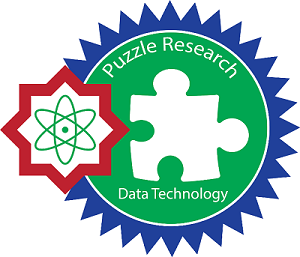ADDITIONAL MENU
Prediction of Heart Disease Using K-Nearest Neighbor and Particle Swarm Optimization Algorithm
Abstract
One of the leading causes of death nowadays is heart disease, so more has to be done to avoid it, such as by making prediction models work better. Among the machine learning algorithms is K-Nearest Neighbor (K-NN) is among the best methods for predicting heart disease based on several risk factors, including smoking, high blood pressure, diabetes, age, and so on. To get accurate values and attribute selection features, we tested them with K-NN, and to improve the results of our research predictions, we combined them using the Particle Swarm Optimization (PSO) algorithm. The results are very interesting after we do the calculations, the algorithm that uses PSO-based K-NN gets a higher weight compared to using only the K-NN algorithm. The predicted value of the weight resulting from the PSO-based K-NN is 97.67%. while the results only use K-NN of 64.92%. The advantages of PSO can also select attributes that can affect it, namely age, diabetes, and ejection fraction. So gathering information through data mining. The PSO-Based K-NN method, which is the primary machine learning technique used in this computation, yields the greatest results in terms of accuracy for heart disease when applied to the data assets. Using the K-NN - PSO algorithm can provide promising results for predicting symptoms that cause heart disease with very good accuracy. PSO is Used to choose features and optimize k values on the K-NN dataset, after which the accuracy is output on the K-NN.
Keywords
Heart Disease; K-Nearest Neighbor; Particle Swarm Optimization; Prediction
Full Text:
PDFReferences
R. Wahyusari, E. H. Herraprastanti, and H. Gunawan, “Machine Learning Techniques for Heart Disease Classification Using K-Nearest Neighbor Optimization with Particle Swarm Optimization,” E3S Web Conf., vol. 500, 2024.
J. Vijayashree and H. P. Sultana, “A Machine Learning Framework for Feature Selection in Heart Disease Classification Using Improved Particle Swarm Optimization with Support Vector Machine Classifier,” Program. Comput. Softw., vol. 44, no. 6, pp. 388–397, 2018.
B. S. and R. K. Apurv Garg, “Heart disease prediction using machine learning techniques,” IOP Conf. Ser. Mater. Sci. Eng., vol. 1022, no. 1, 2021.
I. D. Mienye and Y. Sun, “Improved heart disease prediction using particle swarm optimization based stacked sparse autoencoder,” Electron., vol. 10, no. 19, 2021.
M. S. Pathan, A. Nag, M. M. Pathan, and S. Dev, “Analyzing the impact of feature selection on the accuracy of heart disease prediction,” Healthc. Anal., vol. 2, no. February, p. 100060, 2022.
Y. Khourdifi and M. Bahaj, “Heart disease prediction and classification using machine learning algorithms optimized by particle swarm optimization and ant colony optimization,” Int. J. Intell. Eng. Syst., vol. 12, no. 1, pp. 242–252, 2019.
T. G. and P. L. M. Chintan M. Bhatt , Parth Patel, “Effective Heart Disease Prediction Using Machine Learning Techniques,” MPDI, 2023.
U. Nagavelli, D. Samanta, and P. Chakraborty, “Machine Learning Technology-Based Heart Disease Detection Models,” J. Healthc. Eng., vol. 2022, 2022.
D. Panda, R. Ray, A. A. Abdullah, and S. R. Dash, “Predictive Systems: Role of Feature Selection in Prediction of Heart Disease,” J. Phys. Conf. Ser., vol. 1372, no. 1, 2019.
F. F. Firdaus, H. A. Nugroho, and I. Soesanti, “A Review of Feature Selection and Classification Approaches for Heart Disease Prediction,” IJITEE (International J. Inf. Technol. Electr. Eng., vol. 4, no. 3, p. 75, 2021.
M. A. Jabbar, “Prediction of heart disease using k-nearest neighbor and particle swarm optimization,” Biomed. Res., vol. 28, no. 9, pp. 4154–4158, 2017.
C. Krittanawong et al., “Machine learning prediction in cardiovascular diseases : a meta ‑ analysis,” Sci. Rep., pp. 1–11, 2020.
R. T. Neha Nandal, Lipika Goel, “Machine learning-based heart attack prediction : A symptomatic heart attack prediction method and exploratory analysis [ version 1 ; peer review : awaiting peer review ] Neha Nandal,” F1000Research, pp. 1–17, 2023.
I. M. A. Dara DVVNS Saikumar, Uma Priyadarsini P. S, “Prediction of Heart Disease Using K-Nearest Neighbour Algorithm in Comparison with Support Vector Machine Algorithm,” IEEE, no. International Conference on Informatics and Computational Sciences (ICICoS), 2022.
M. Amanullah, “A PSO-SVM Feature Selection Method For Improving The Prediction,” Int. J. Comput. Eng. Technol., no. September, 2022.
A. Al Bataineh and S. Manacek, “MLP-PSO Hybrid Algorithm for Heart Disease Prediction,” J. Pers. Med., vol. 12, no. 8, 2022.
A. G. Gad, Particle Swarm Optimization Algorithm and Its Applications: A Systematic Review, vol. 29, no. 5. Springer Netherlands, 2022.
M. P. Behera, A. Sarangi, D. Mishra, and S. K. Sarangi, “A Hybrid Machine Learning algorithm for Heart and Liver Disease Prediction Using Modified Particle Swarm Optimization with Support Vector Machine,” Procedia Comput. Sci., vol. 218, no. 2022, pp. 818–827, 2023.
E. P. Saputra, Supriatiningsih, Indriyanti, and Sugiono, “Prediction of Evaluation Result of E-learning Success Based on Student Activity Logs with Selection of Neural Network Attributes Base on PSO,” J. Phys. Conf. Ser., vol. 1641, no. 1, 2020.
M. A. jabbar, B. L. Deekshatulu, and P. Chandra, “Classification of Heart Disease Using K- Nearest Neighbor and Genetic Algorithm,” Procedia Technol., vol. 10, pp. 85–94, 2013.
Y. Zhang, S. Balochian, P. Agarwal, V. Bhatnagar, and O. J. Housheya, “Artificial Intelligence and Its Applications 2014,” Math. Probl. Eng., vol. 2016, 2016.
Okwara Jerry Chizoba and Buba Abba Kyari, “The particle swarm optimization (PSO) algorithm application – A review,” Glob. J. Eng. Technol. Adv., vol. 05, no. 02, pp. 047–056, 2020.
T. Eswaran and V. S. Kumar, “Particle swarm optimization (PSO)-based tuning technique for PI controller for management of a distributed static synchronous compensator (DSTATCOM) for improved dynamic response and power quality,” J. Appl. Res. Technol., vol. 15, no. 2, pp. 173–189, 2017.
I. Yekkala, S. Dixit, and M. A. Jabbar, “Prediction of heart disease using ensemble learning and Particle Swarm Optimization,” Proc. 2017 Int. Conf. Smart Technol. Smart Nation, SmartTechCon 2017, pp. 691–698, 2018.
W. Y. Dong and R. R. Zhang, “Order-3 stability analysis of particle swarm optimization,” Inf. Sci. (Ny)., vol. 503, no. 61672024, pp. 508–520, 2019.
DOI: http://dx.doi.org/10.24014/ijaidm.v8i1.33373
Refbacks
- There are currently no refbacks.
Office and Secretariat:
Big Data Research Centre
Puzzle Research Data Technology (Predatech)
Laboratory Building 1st Floor of Faculty of Science and Technology
UIN Sultan Syarif Kasim Riau
Jl. HR. Soebrantas KM. 18.5 No. 155 Pekanbaru Riau – 28293
Website: http://predatech.uin-suska.ac.id/ijaidm
Email: ijaidm@uin-suska.ac.id
e-Journal: http://ejournal.uin-suska.ac.id/index.php/ijaidm
Phone: 085275359942
Journal Indexing:
Google Scholar | ROAD | PKP Index | BASE | ESJI | General Impact Factor | Garuda | Moraref | One Search | Cite Factor | Crossref | WorldCat | Neliti | SINTA | Dimensions | ICI Index Copernicus
IJAIDM Stats










